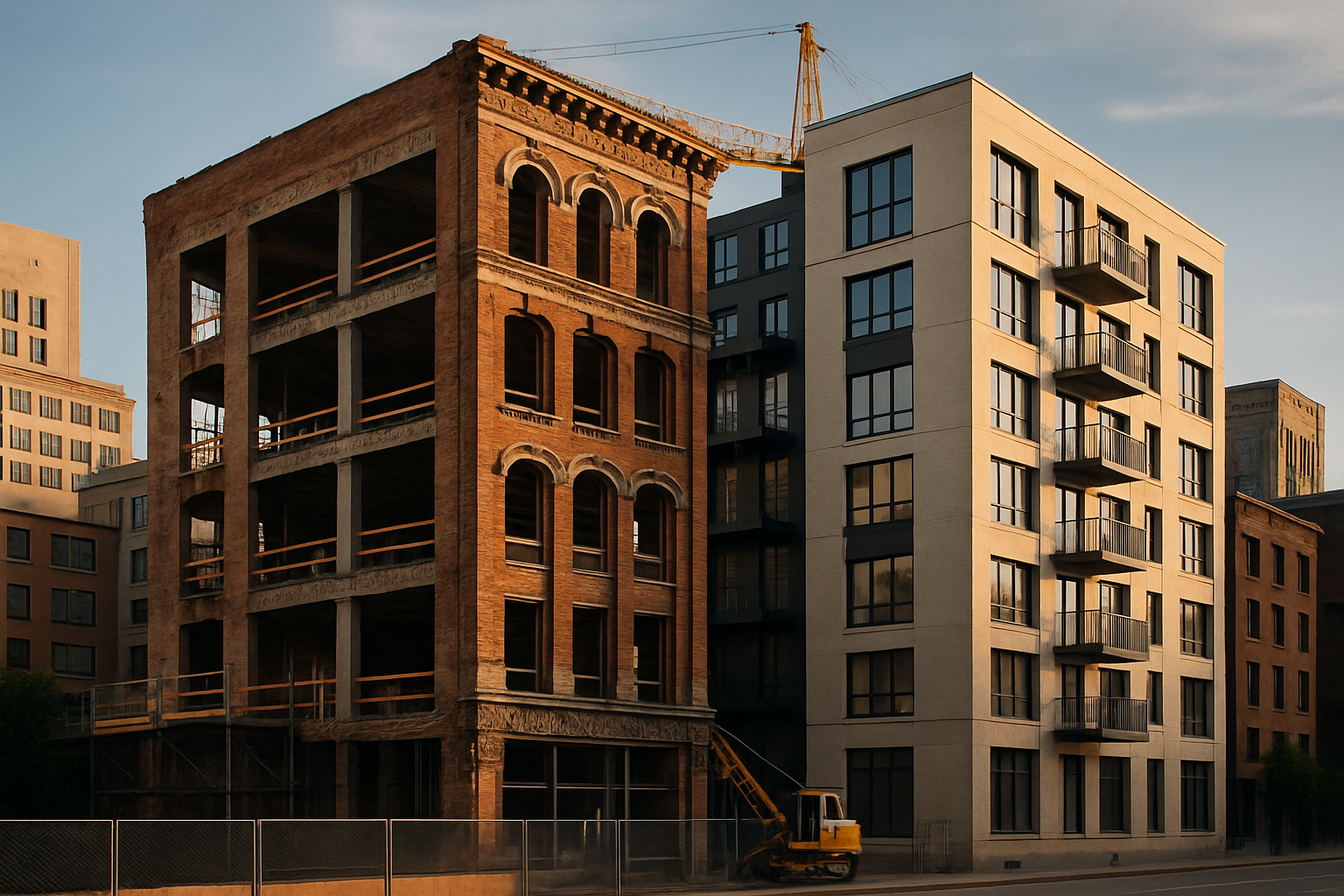Adaptive Reuse: Transforming Industrial Spaces into Residential Havens
The intersection of urban renewal and residential demand has given rise to a compelling trend in real estate: adaptive reuse of industrial spaces. This innovative approach breathes new life into abandoned factories, warehouses, and other industrial structures, converting them into sought-after residential properties. With urban land becoming scarce and sustainability concerns growing, adaptive reuse presents a unique solution that marries historical preservation with modern living needs.

These projects often retain original structural elements like exposed brick walls, high ceilings, and large windows, creating loft-style apartments that command premium prices. The industrial aesthetic, once considered unappealing for residential use, has become a coveted feature in urban real estate markets.
Economic and Environmental Benefits
From an economic standpoint, adaptive reuse projects can be more cost-effective than new construction. While initial renovation costs may be substantial, developers often benefit from existing infrastructure and the inherent value of prime urban locations. Additionally, many municipalities offer tax incentives for the rehabilitation of historic structures, further enhancing the financial viability of these projects.
Environmentally, adaptive reuse aligns with sustainability goals by reducing construction waste and preserving embodied energy – the energy consumed by all processes associated with the production of a building. By repurposing existing structures, developers can significantly lower the carbon footprint associated with new construction while contributing to urban densification efforts.
Market Demand and Demographic Shifts
The demand for industrial-turned-residential spaces is driven by changing preferences among urban dwellers, particularly millennials and young professionals. These demographics often prioritize unique living experiences, walkable neighborhoods, and a connection to local history – all of which are hallmarks of well-executed adaptive reuse projects.
Recent market trends indicate a growing premium for such properties. In many cities, converted lofts and apartments in repurposed industrial buildings command higher per-square-foot prices compared to conventional new constructions. This premium reflects not just the uniqueness of these spaces but also their typically central locations and the cachet associated with living in a piece of local history.
Challenges in Adaptive Reuse Projects
Despite the appeal, adaptive reuse projects face unique challenges. Developers must navigate complex zoning regulations, as many industrial sites are not initially zoned for residential use. Environmental concerns, such as soil contamination from previous industrial activities, can also pose significant hurdles and remediation costs.
Structural modifications to meet modern building codes and residential standards can be extensive and expensive. Issues like asbestos removal, lead paint abatement, and upgrades to electrical and plumbing systems are common in older industrial buildings. Additionally, creating a comfortable living environment in spaces originally designed for industrial use requires innovative architectural and engineering solutions.
Case Studies: Success Stories in Industrial Conversion
Numerous successful adaptive reuse projects across the globe serve as inspirations for this trend. In New York City, the Puck Building in SoHo, originally a printing house, has been transformed into luxury penthouses while maintaining its historic facade. In London, the Battersea Power Station redevelopment has turned an iconic industrial landmark into a mixed-use development featuring high-end apartments.
These projects demonstrate how industrial conversions can become catalysts for neighborhood revitalization. They often spark a domino effect, attracting new businesses, improving local infrastructure, and enhancing property values in surrounding areas.
Future Outlook: The Evolution of Industrial Reuse
As urban populations continue to grow and the supply of developable land in city centers dwindles, the trend of adaptive reuse is likely to accelerate. Future projects may extend beyond traditional industrial spaces to include adaptive reuse of other non-residential structures like office buildings, schools, and even religious edifices.
Technological advancements are also shaping the future of these conversions. Virtual and augmented reality tools are being employed to help potential buyers visualize the transformation of raw industrial spaces into livable environments. Smart home technologies are being integrated seamlessly into these historical structures, creating a unique blend of old and new.
Implications for Real Estate Investors and Developers
For real estate investors and developers, industrial-to-residential conversions represent both an opportunity and a challenge. The potential for high returns is significant, given the premium that unique, character-filled spaces command in the market. However, these projects require a specialized skill set, including expertise in historical preservation, creative problem-solving, and an understanding of the complex regulatory landscape surrounding such conversions.
Investors considering this niche should conduct thorough due diligence, factoring in not just the acquisition and renovation costs but also potential environmental remediation expenses and zoning change processes. Partnering with experienced architects and contractors who specialize in adaptive reuse can be crucial for navigating the complexities of these projects.
A Sustainable Path Forward
The trend of converting industrial spaces into residential properties represents a sustainable and innovative approach to urban development. It addresses multiple challenges simultaneously – preserving historical architecture, meeting housing demands in urban centers, and promoting sustainable development practices. As cities continue to evolve, adaptive reuse of industrial buildings is likely to play an increasingly important role in shaping the urban landscape, offering unique living experiences while honoring the industrial heritage of our cities.
For real estate professionals, this trend opens up new avenues for creative development and investment. It challenges conventional notions of residential spaces and pushes the boundaries of what’s possible in urban living. As we move forward, the success of these projects will likely inspire further innovations in how we repurpose our built environment, creating homes that are not just places to live, but living pieces of history.




